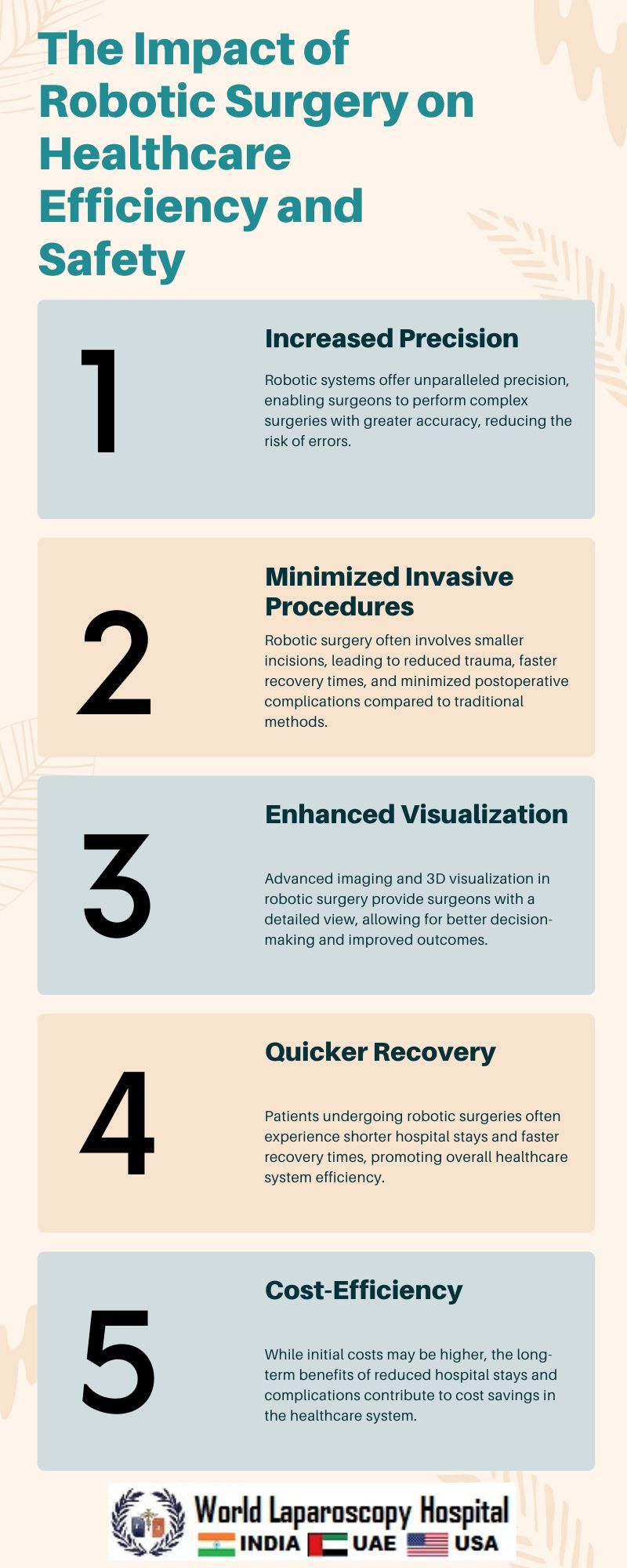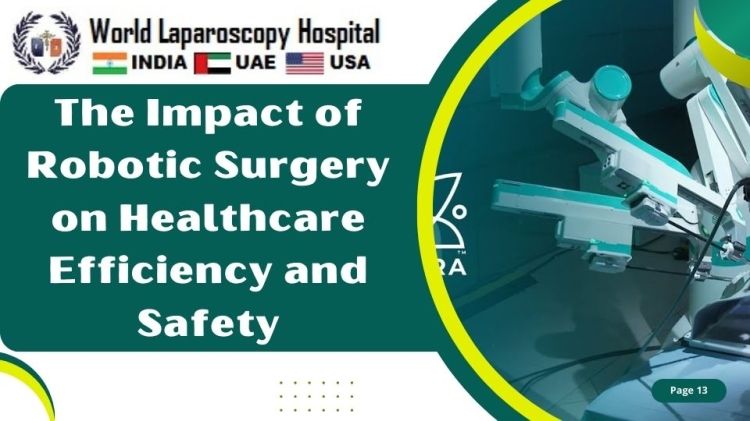The Impact of Robotic Surgery on Healthcare Efficiency and Safety
Introduction:
In recent years, robotic surgery has emerged as a groundbreaking technological advancement, reshaping the landscape of healthcare delivery. This article explores the multifaceted impact of robotic surgery on both efficiency and safety within the healthcare sector, delving into the nuances of this transformative technology.

Understanding Robotic Surgery:
Robotic surgery involves the use of advanced robotic systems to assist surgeons in performing intricate procedures with precision and control. Unlike traditional methods, these systems offer a minimally invasive approach, utilizing smaller incisions and specialized robotic arms controlled by surgeons from a console.
Enhancing Surgical Precision:
One of the key contributions of robotic surgery is its ability to enhance precision in surgical procedures. The robotic arms can execute movements with a high level of accuracy, surpassing the limitations of human hands. This precision is particularly crucial in delicate surgeries where even the slightest error can have significant consequences.
Minimally Invasive Techniques:
Robotic surgery enables a minimally invasive approach, reducing the need for large incisions. Smaller incisions lead to faster recovery times for patients, decreased postoperative pain, and a lower risk of complications such as infections. The shift towards minimally invasive techniques has redefined the patient experience, promoting quicker rehabilitation and shorter hospital stays.
Improved Patient Outcomes:
The integration of robotic surgery has resulted in improved patient outcomes across various medical specialties. Whether it's cardiac, urologic, gynecologic, or gastrointestinal surgery, robotic assistance allows for more precise interventions, contributing to better results and increased overall patient satisfaction.
Efficiency in the Operating Room:
The efficiency gains in the operating room are undeniable with robotic surgery. The intuitive control systems and real-time imaging provided by robotic platforms empower surgeons to navigate complex anatomies with greater ease. This efficiency translates into reduced surgical times, benefiting both patients and healthcare institutions.
Training and Skill Development:
Robotic surgery also plays a pivotal role in training and skill development for surgeons. The immersive nature of robotic systems allows for simulated training scenarios, providing surgeons with a platform to enhance their skills in a risk-free environment. This training methodology contributes to a more proficient surgical workforce, ultimately enhancing overall healthcare quality.
Challenges and Considerations:
While the advantages of robotic surgery are apparent, challenges and considerations exist. The initial costs associated with acquiring and maintaining robotic systems can be substantial. Additionally, there is a learning curve for surgeons transitioning to robotic-assisted procedures. Addressing these challenges requires a strategic approach to investment, training, and ongoing system optimization.
Safety Protocols and Risk Mitigation:
Ensuring patient safety is a paramount concern in healthcare, and robotic surgery introduces its own set of safety considerations. Establishing robust safety protocols, regular system maintenance, and continuous monitoring are essential to mitigate potential risks. Adherence to these measures enhances the overall safety profile of robotic surgery and fosters a culture of continuous improvement.
Evolving Technology and Future Prospects:
As technology continues to evolve, the future of robotic surgery holds promising prospects. Advancements in artificial intelligence, haptic feedback, and augmented reality are poised to further elevate the capabilities of robotic systems. These innovations may open new frontiers in surgical precision, expand the range of applicable procedures, and continue to refine the balance between efficiency and safety.
Ethical Considerations and Patient Consent:
The adoption of robotic surgery prompts ethical considerations, particularly regarding informed consent. Patients must be adequately informed about the nature of robotic-assisted procedures, potential risks, and the surgeon's expertise. Striking a balance between promoting technological advancements and ensuring patient autonomy is crucial for ethical practice in the era of robotic surgery.
Global Adoption and Accessibility:
While robotic surgery has gained significant traction in developed regions, global accessibility remains a challenge. Disparities in healthcare resources and infrastructure limit the widespread adoption of robotic systems in certain parts of the world. Bridging this gap requires concerted efforts to make advanced medical technologies more accessible, addressing issues of affordability and infrastructure development.
Conclusion:
In conclusion, the impact of robotic surgery on healthcare efficiency and safety is profound, ushering in a new era of surgical innovation. From enhanced precision and minimally invasive techniques to improved patient outcomes and surgeon training, robotic surgery continues to reshape the healthcare landscape. While challenges and ethical considerations persist, ongoing technological advancements and strategic implementation are poised to further optimize the balance between efficiency and safety, ensuring a brighter future for healthcare delivery worldwide.
